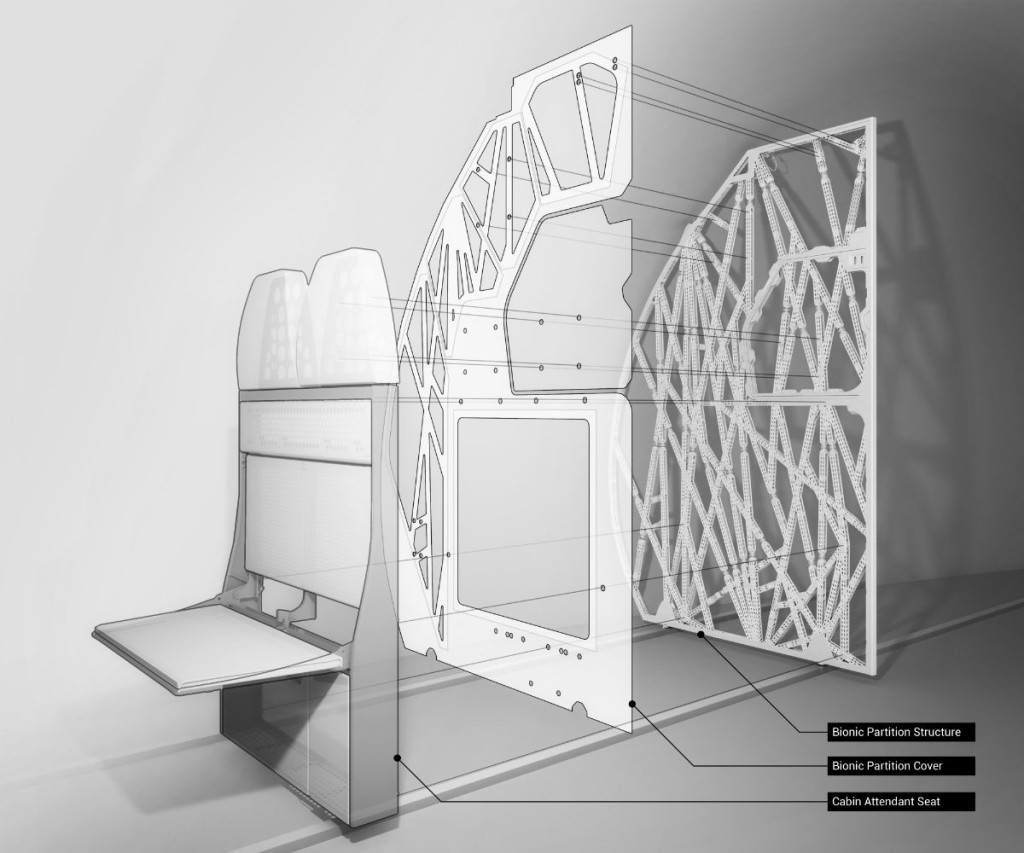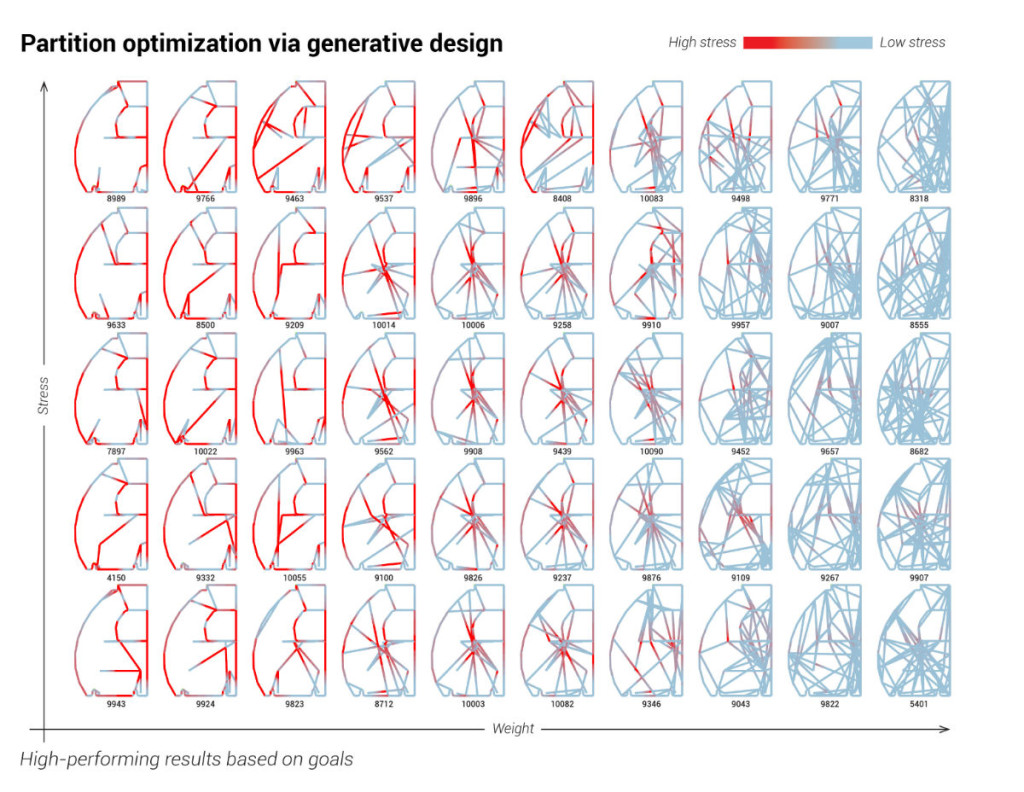A few years back, when Airbus put out its video detailing a concept for a 3D printed airliner, it seemed pretty outlandish. Since then, both the industry as a whole and Airbus have made developments that make that vision a bit less absurd. While numerous large-scale 3D printers have made public appearances, 3D printing structures big enough to be assembled into complete buildings and Sciaky’s enormous EBAM machines have gone on the market, Airbus has already flown numerous 3D printed parts, including the largest ever to hit the skies. And they’ve added yet another large part to their 3D printed repertoire.
To further lighten the load of their aircraft, Airbus turned to Autodesk to design lightweight partition for their cabins, used to separate classes and the flight crew. Unveiled at Autodesk University in Las Vegas, the new and improved design was not only significantly less bulky than existing partitions, but was more organic as well, based of the growth of slime molds and bones. 3D printing these structures, sound enough to hold the weight of flight attendants, the company was able to reduce the weight from 143 pounds down to 66. Bastian Schaefer, innovation manager at Airbus, said of the design process, “Our goal was to reduce the weight by 30 percent, and we altogether achieved weight reduction by 55 percent. And we’re right at the beginning.”
The design for the Bionic Partition was created by David Benjamin, whose innovative The Living architecture practice takes cues from nature to create structures. For the larger structure of the piece, which Benjamin describes as the “macro frame”, the architect mimicked the growth of the slime mold, capable of forming strong connections between two points. And the “micro frame”, making up the design components within the outer frame, were modeled after mammalian bone growth, more delicate grid structures. Setting the parameters in this way, he was then able to rely on Autdoesk’s powerful Dreamcatcher software to generate the rest, saying, With these algorithms in place, Benjamin and Airbus could define parameters for the partition and let the software do its thing. “We can generate literally tens of thousands of design iterations, compared with the manual process which could generate maybe a dozen.”
Not only does the final product require less of the Scalmalloy (an aluminum, magnesium, and scandium alloy), but it is optimized to support the necessary weight, something that would be extremely difficult for a designer to create without software, Benjamin says. “A human might make something where, if you wanted to connect all the points, you would start at the perimeter, or start at the center and draw spokes,” the architect explains. “It’s hard for a human with a rule-based brain to think of the complexity of connecting local neighborhoods, but also connecting the whole. The slime mold type of connectivity is a really fascinating way to connect two points.”
The partition has since gone through the standard tests necessary for manufacturing aircraft parts, with plans to incorporate the components in aircraft as soon as next year. If successful, Airbus may apply the same generative approach in larger parts of an airplane. When the entire aircraft itself will be 3D printed is TBA, but Schaefer says, “This is still the goal, to be able to print an entire airplane, or large components of it.”
Correction: A previous version of this article stated that Autodesk Within was used for this project, when, in actuality, it was Autodesk Dreamcatcher.





